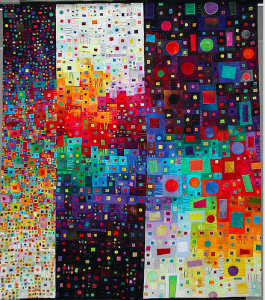 When a representative of a company and a researcher meet, it can take a while to find a common language. In the COHU co-creation pilot, we’ve made an attempt to find such a common language and shared understanding. Now the dialogue part of the pilot is over and our feelings conflicted – we found a common language so well that the discussions could have continued endlessly!
When a representative of a company and a researcher meet, it can take a while to find a common language. In the COHU co-creation pilot, we’ve made an attempt to find such a common language and shared understanding. Now the dialogue part of the pilot is over and our feelings conflicted – we found a common language so well that the discussions could have continued endlessly!
But, all good things come to an end.
While some parts of the dialogue followed a script of a mutually respectful exchange of views, surprises lurked around the corner. It could be anticipated that not all would see eye to eye on things. We didn’t invite participants that were already like-minded, but chose to mix and match them. This was intentional. We believed that true learning and co-creation type of discoveries could best be initiated when expectations, perspectives and working habits were challenged. Polite confrontations occurred along the way, some less and some more surprising. Nearly all of them led to collective, new realisations.
A personal surprise came in the first dialogue when a company representative noted he’d never actually met an anthropologist. He was intrigued, and happily admitted he had no knowledge of what anthropologists actually do. This came to describe the spirit of the dialogues: new perspectives were not shot down but embraced with interest. Follow-up questions flew across the room. Supporting views appeared from unexpected participants.
The issues companies brought to discussion were mainly wicked problems. The kind of problems where a straightforward and sustainable solution is difficult to identify, almost impossible in the fast-paced environment of the business world. With researchers these problems came to life: they were given interesting connections, new meanings and narratives, new perspectives. As we approached the end of the six dialogue sessions, the problems may still have existed but the questions related to them had changed. The participants could address the problems from multiple angles, and see them as wholes rather than details. This approach laid the foundation for entirely new solutions that are, first and foremost, sustainable. The solving of wicked problems is exciting precisely because it’s not possible to predict.
In the final dialogue we focused on the process itself. COHU is a method in development, and we wanted to understand how the participants experienced the dialogues and ways of working. The moment of truth had arrived. Many admitted to having expected more post-it notes. To many, co-creation still means (rather traditional) team work in small groups and problem-based brainstorming. The COHU model is instead based on dialogue: people sat in a circle and discussed. Despite being so simple, the working method was new to many of the participants.
We strive to facilitate deeper cooperation between companies and researchers. We also aim at developing a co-creation model that helps make collaboration between companies and researchers more natural. In our view, promoting the idea of co-creation is not enough. To make our vision a reality, we need to find useful tools that support the type of co-creation that is beneficial and useful to all participants. The brave, open-minded people that took part in our pilot dialogues showed us that this vision is not only feasible but also worth the (load of) time they invested.
A sigh of relief – and great big smiles – could be felt among the COHU project team.
The problems companies brought to the COHU dialogues were very different on many levels. No easy solutions were available. The challenge – and risk of failure to deliver – was obvious to everyone. Yet, precisely because of this it was a delight to see people of different fields, professions and backgrounds delve into the challenges. They listened to each other and acknowledged the different perspectives. They dared be open to possibilities they couldn’t see coming.
Sometimes it’s good to meet an anthropologist, or an engineer, and look the wicked problem in the eye! We are proud to report that all researchers and companies that took part in the pilot are willing to continue collaboration. They want to take the solutions forward. Some in a research project and others through a shorter form of academic consultation.
Emmi Holm
Kirsi Pulkkinen